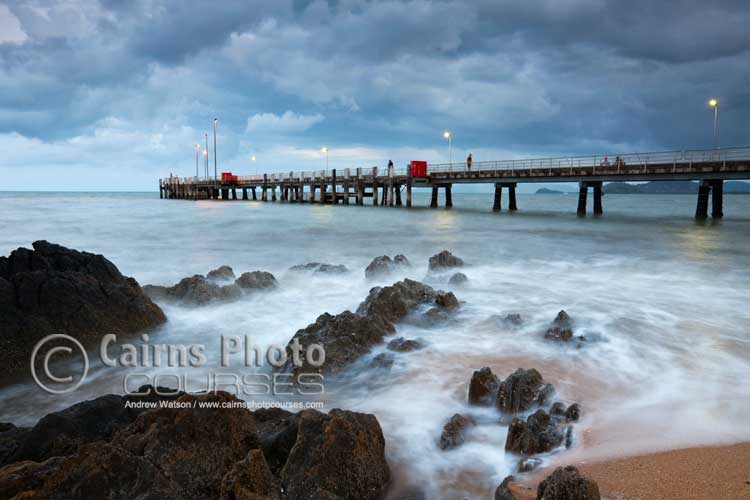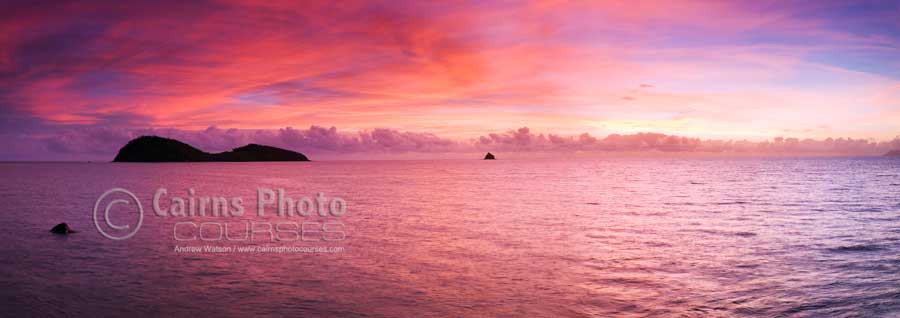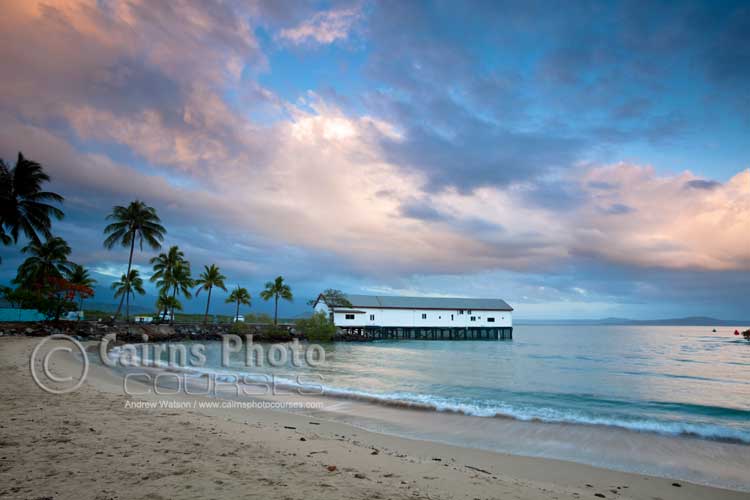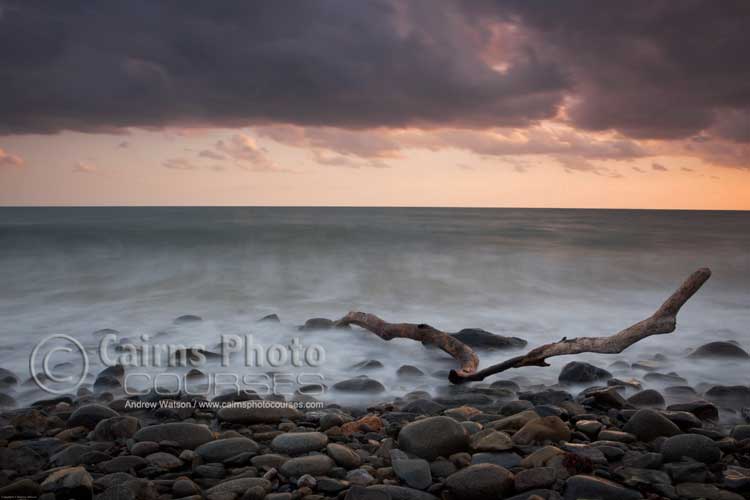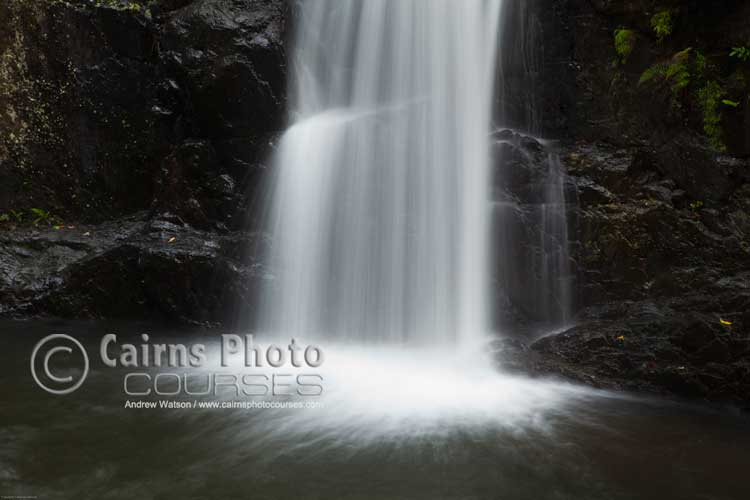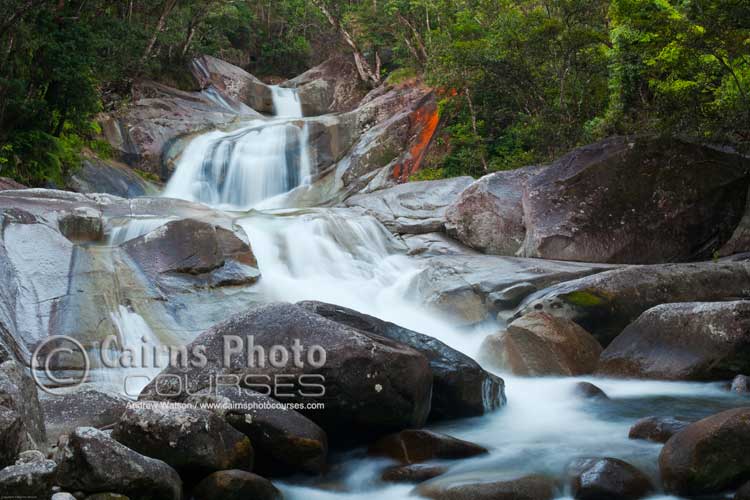Wet season photography
March 9th, 2014
Here in North Queensland, January to March is the wet season… a time of year when the heat and humidity really kicks in, mosquitos come out to play and when it feels like monsoonal skies could descend at any minute. Throw in the possibility of cyclones and flooding and it may seem like photography is something best left for another time.
It is however one of my favourite times of year to grab the camera and head off into the outdoors… tropical creeks and waterfalls are pumping, the rainforest and tablelands areas are at their greenest, mist shrouds the peaks of sodden mountain tops and the sky is menacingly grey or lit up with fantastic morning light. Being low season, few tourists get to see this unpredictable and moody side of North Queensland, but it definitely throws up photographic opportunities unique to these months of the year.
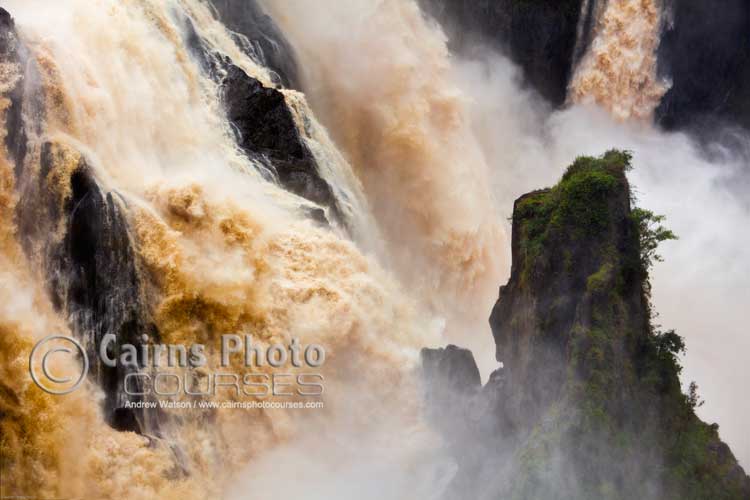
Barron Falls with high shutter speed to freeze action of water. Canon 5D MkII, Tripod, 85mm, ISO 200, f5.6 @ 1/500 sec
The Coast
Getting up for sunrise during wet season is always bit of a lottery. Early morning cloud over the Coral Sea can mean either a total grey out or a sky painted in a beautiful crimson or golden light. Aim to get to your location at least half an hour before sunrise, so you can find your best position and have your camera set up and ready. If things don’t look good for a sunrise shot, hang around a little while… conditions can change quickly and often great light reveals itself just after dawn.
Use long exposures (1 sec +) to blur the waves crashing on the shore and use a graduated neutral density filter to balance the sky and foreground exposure, or to make the sky more dramatic.
Waterfalls
Overcast or rainy days are actually the best for shooting waterfalls, as the reduced contrast means that you can capture all the detail in the waterfall and surrounding greenery. Lower light levels also allow you to shoot with slower shutter speeds, enabling easier blurring of the water movement (generally anything slower than 1/2 sec).
Use a tripod and a polarising filter (or a neutral density filter), which not only allows longer exposures but can be used to reduce the glare off the water and foliage. To really give the viewer as a sense of the location, shoot low from just above the water level. Experiment with different shutter speeds to get the effect you’re looking for. Manual exposure is generally the best exposure mode to use, combined with a low ISO value (eg. ISO 100).
Visiting waterfalls in full flood usually means that you’ll be up against mist generated at the base of the falls. If you intend on getting up close and personal, bring something to dry your camera from the moisture, or a cover that you can use to shield your camera between shots. An umbrella also allows you to keep shooting when the inevitable rains arrive.
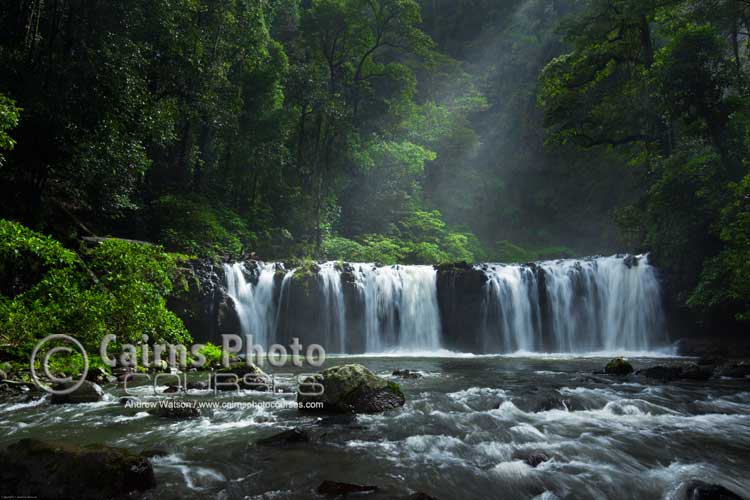
Getting low over the water to shoot Nandroya Falls. Canon 5D MkII, Tripod, 26mm, ISO 100, f16 @ 1/10 sec
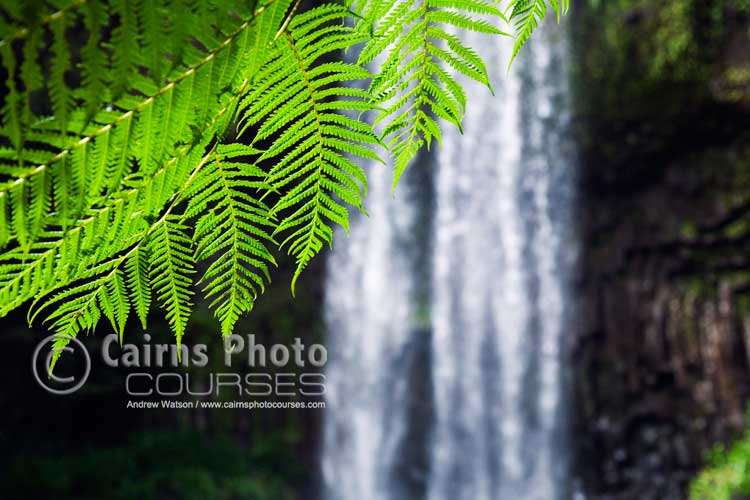
Using a large aperture to isolate fern leaf from background. Canon 5D, Tripod, 64mm, ISO 400, f5.6 @ 1/160 sec
Rainforests & Creeks
As for when shooting waterfalls, cloudy or slightly rainy days are my preferred option for shooting in rainforests. The reduced contrast enables you to better expose for wide landscapes, as well as small rainforest detail. Again, a tripod and polarising filter are essentials, as is a full can of mosquito repellant to ward off the ferocious little biters.
Use of a low ISO and the darker conditions in the rainforest will necessitate longer exposures on the tripod. Figure on using a medium to small aperture (f8 to f16) to get sharp, clear detail in your wide shots, but watch for too much motion blur in the trees and switch to a higher ISO if necessary.
Also look out small detail that can be shot with a macro lens or setting… lichens, mosses, leaf details, insects or fungi. Choose a larger aperture (f4 or f5.6) to isolate your macro subject from the background. A bit of fill flash can also be used to add some additional light and colour.
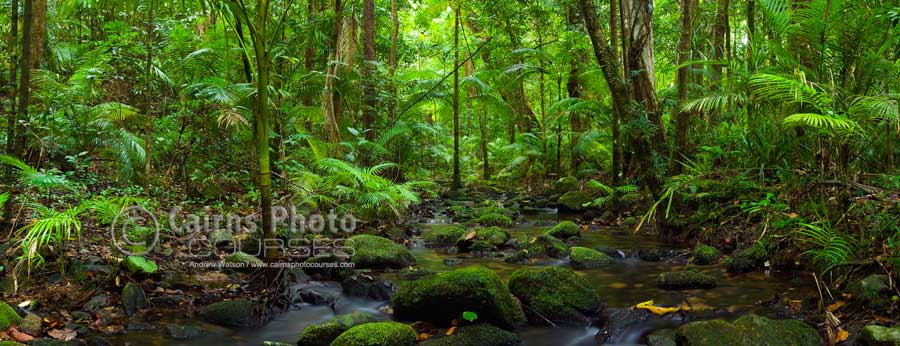
Long exposure and polarising filter to reduce glare on leaves. Stitched pano, Canon 5D, Tripod, 50mm, ISO 100, f11 @ 10 sec
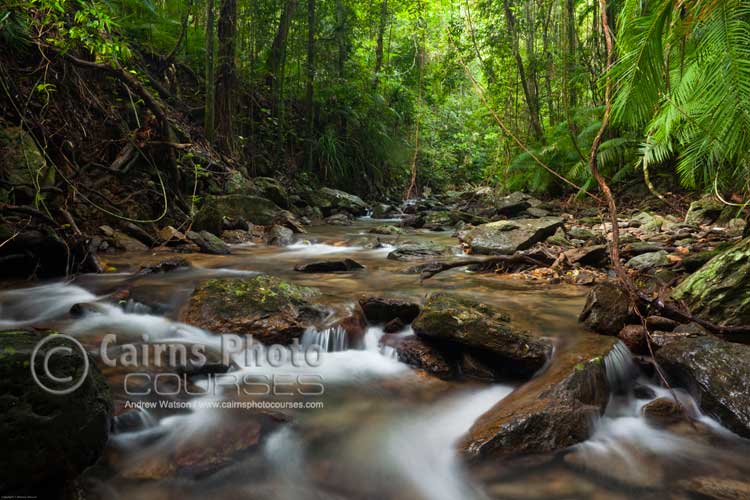
Small aperture and polarising filter in shooting a rainforest creek. Canon 5D MkII, Tripod, 24mm, ISO 200, f16 @ 3.2 sec
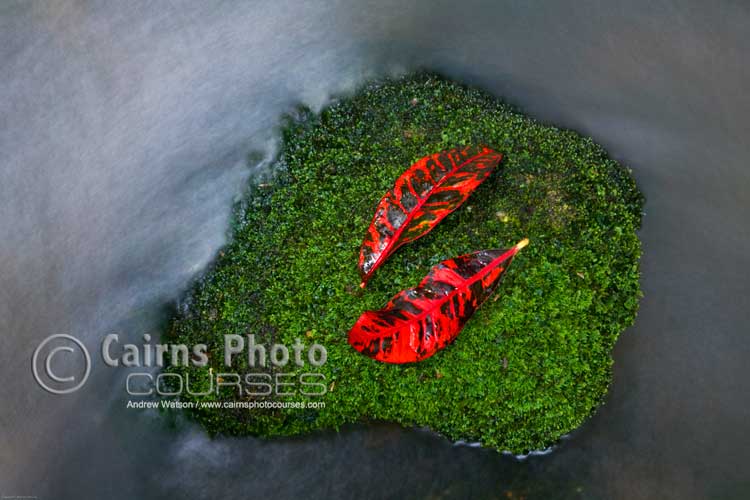
Colourful rainforest detail with long exposure for water. Canon 5D, Tripod, 58mm, ISO 100, f16 @ 10 sec
We’re lucky in North Queensland to have really diverse rainforest areas, some of which you don’t have to venture far from the city to experience. Irrespective of whether you have a DSLR or compact camera, rainforests are the perfect place to relax, unwind and experiment with your camera… you’ll no doubt bring back some memorable images.

